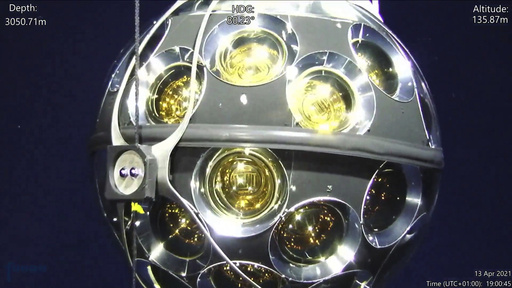
In a significant breakthrough, a neutrino detector located in the Mediterranean Sea has identified the most energetic neutrino ever recorded, according to announcements made by researchers on Wednesday.
This particular neutrino is approximately 30 times more energetic than the previous record-holder, and scientists speculate that its origin lies beyond the Milky Way galaxy, though the precise source remains unknown.
Neutrinos are often referred to as ghost particles due to their incredibly minute mass, which makes them elusive to detect. They are emitted from various celestial bodies, including our own sun, and trillions of these particles pass through our bodies every second without any interaction.
The challenge in detecting neutrinos arises because they cannot be tracked individually as they move through space. Researchers instead observe the effects of neutrinos colliding with matter. Two years ago, an event occurred where a neutrino made contact with matter, producing a muon—another elementary particle. This muon traveled through the underwater detector, creating visible flashes of blue light. The researchers utilized this information to backtrack and measure the energy of the neutrino, publishing their results in the journal Nature on Wednesday.
Aart Heijboer, a co-author of the study from the National Institute for Subatomic Physics Nikhef in the Netherlands, emphasized the importance of this discovery in understanding the most energetic processes occurring in the universe.
The detector responsible for this cutting-edge find is part of a larger deep-sea neutrino observatory that is still under development. Neutrino detectors are typically positioned underwater, under ice, or deep underground to minimize interference from radiation at the Earth’s surface.
The early detection of this highly energetic neutrino could indicate that there is a greater abundance of such particles than previously anticipated by scientists.
Physicist Denver Whittington from Syracuse University, who was not part of the research, expressed that this finding suggests a promising trajectory in neutrino studies, implying the possibility of unexpected discoveries ahead.
While the identity of the neutrino’s source remains uncertain, physicist Mary Bishai from Brookhaven National Laboratory noted the need for additional observations from other telescopes to gather more data, stating, “It’s one event. We have to see what the other telescopes are also observing.”

